IndiaWilds Newsletter Vol. 8 Issue III
Distopian future: Learning from American Election
The 2016 Presidential election process of United States has highlighted and brought to the notice of the entire world a heinous environmental crime perpetuated on the residents of a small town. The extreme callousness towards less affluent citizens and the efforts to downplay the issue in the initial days is shocking and has important lessons for us.
Flint is a small town on the bank of Flint River in Michigan in USA. It used to be a bustling town and was known as an automobile hub. Flint had a factory of General Motors. Though General Motors initially was perceived as a boon for the economy of Flint town due to the employment generated, General Motors also destroyed the Flint River by dumping toxic waste into the river.
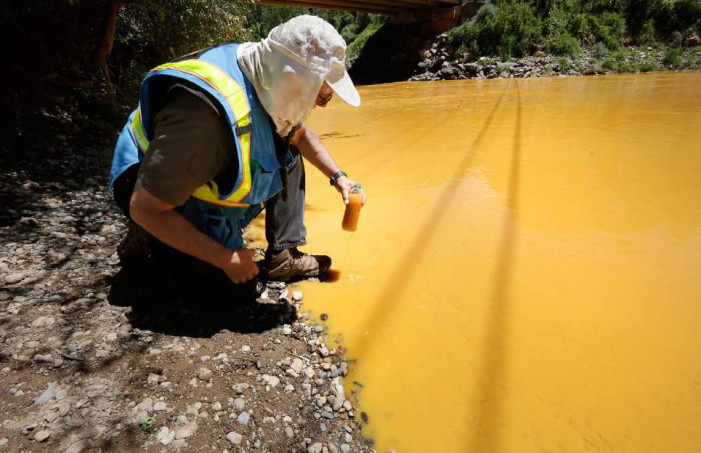
Flint River pollution Courtesy – online media
Later General Motors left the city and much of its population also moved away in search of better opportunities leaving behind a toxic river. The reduced industrial activities resulted in less revenues for the city council and resulted in emergency administrative managers posted by the Governor.
Till early 2014, the Flint town was getting water from the Detroit Water and Sewage Department which sourced water from Lake Huron and Detroit River. In April, 2014, the Flint city council decided to discontinue the sourcing of water from Detroit Water and Sewage Department and decided to join Karegnondi Water Authority (KWA) to reduce their costs. However, the KWA project was not to be ready by 2016. So they decided to source water from the polluted Flint River after the contract with Detroit was over in April 2014. This process was overseen by the administrative managers appointed by the Governor.
When water from Flint river was supplied, the water was so corrosive that it corroded the lead pipelines. The toxic water contaminated with lead resulted in people losing hair and even eyelashes. Kids started getting rashes, pains in body and abdomen, suffered poor attention span, lose weight and have lower IQ. Certain studies also say that lead can also lead to volatile and criminal behaviour. Lead has massive impact on reproductory organs as well as vital organs. The neurological and behavioural effects of lead is irreversible.
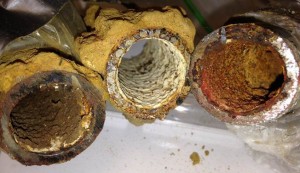
Rusted pipes due to Flint river water Courtesy – Flintwaterstudy
According to US law, the maximum permissible concentration of lead in water is 15 ppb (parts per billion). However, the water had 400 ppb lead. On 5th of January, 2016, a state of emergency was declared in Flint. The Governor issued an apology and then sent 28 million dollars worth of medical and other supplies and for infrastructure upgrade. However, the sad thing is thousands of people are impacted for generations to come.
The city of Flint suffered because it was poor. The automobile industry had shifted its base away from Flint. The city council didn’t have enough money. So the managers appointed by the Governor decided that the poor city be fed with toxic water from a river which had previously been the dumping ground of General Motors.
A river cannot be a dumping ground for our wastes. A thoughtless action of one generation continues to hunt future generations. When General Motors dumped wastes in the Flint River in USA, they would not have envisaged that many decades later a few thoughtless managers would have forced an entire city to be supplied with such toxic water making them suffer irreversible damages throughout their lives.
Relevance to India:
This situation can happen anywhere in India, if it is not happening already. We too have cities, which were once thriving due to industries and now struggling with their finances.
The various State Governments offer incentives to attract industries to their States and often industries are forced to set up their facilities at locations, which are constituencies of some leaders. Most of the times these places are poorly connected and the cost of transportation of raw materials, finished goods as well as workers make it unviable for the industries to continue for a long time. Over a period of time these industries shift away to other localities and the people migrate from these cities to other places. These cities are often far away from our Capital and when an environmental disaster happens, it doesn’t get covered in the national media. When it gets covered it doesn’t become front page news or get prime time coverage. Being so far away from the capital also results in the issue failing to resonate with us. Such is the world these days, that we don’t care to notice if something doesn’t happen in our immediate vicinity.
One such case where the environmental disaster didn’t resonate with the rest of the country is the mercury poisoning by Hindustan Lever’s thermometer factory in Kodaikanal. This factory had dumped wastes and the mercury had leached into the ground poisoning the ground water, soil and people. There were even many attempts to cover up the case and suggest that the health problems of the workers and their children were not due to mercury poisoning. A lot of people had forgotten this case until a viral video brought this to limelight and in order to avoid getting a bad name HLL decided to settle the case by paying compensation to victims. This saga continued for 15 years.
Another reason why an environmental disaster like the one witnessed in Flint town, is not unthinkable in India is because people often view a river as a water channel, no different from a canal or pipeline. We take pride in calling ourselves as people with a modern outlook, as a society that has made rapid scientific advances by sending spacecraft to Mars among others. However the lack of scientific temper is appalling. Even people of repute, who have made their name in their own field and are looked up to by others as opinion makers, fail to understand that a river is a living ecosystem. You can’t just cement its flood plains and set up concrete benches for people to sit in the name of creating “bio-diversity parks” or flatten the flood plains to hold concerts in the name of promoting culture and entertainment.
One of the reasons for an environmental disaster like the one in Flint won’t resonate with us is because it unfolds over a period of time. Our media is too short sighted today because no one has the time, energy, inclination and more importantly funds to research and pursue a story over a period of time. Unless there is a disaster like Bhopal where the poisonous gas leakage from Union Carbide company killed and maimed huge populations of a city at one go, it won’t catch the attention of our media and people.
The other reason why a disaster like Flint can happen in India is because, most of the times the industries and even Government or private parties don’t disclose their entire plan. So they take permissions on piece meal basis without disclosing adequate information and at times start their activities or projects without even any relevant permissions. And for this there is a loophole in the law to exploit.
Fait accompli in Forest & Environment Clearance:
Our environment and wildlife is treated as a means to further our interests. Nothing is sacrosanct. From the recent judgment given by Supreme Court and NGT (National Green Tribunal) it is very clear that if an industry, agency private party or Government undertakes an activity in clear violation of environmental laws and by the time the NGT or Supreme Court decides that the activity is in violation of forest and wildlife norms, then still the Govt./industry or agency can plead that a lot of money has been spent and hence it should be allowed to proceed. The principle of fait accompli is a massive loophole which is being used to tear apart our fragile ecosystems.
In the Sethu Samudram case the UPA Government had talked about the huge amount of money already spent in dredging activities to create a channel deep enough for ships to pass through. In the Lafarge Cement case in Meghalaya the company didn’t seek forest clearance to mine limestone as it claimed that there is no forest within 25 kms of the area. It had got environmental clearance in 2001 and didn’t take the forest clearance. In 2006 the chief conservator appraised MoEF about it and the project was stopped. Later Supreme Court allowed the project and asked it to pay money towards afforestation and development of the area since the damage has been done rendering it a fait accompli situation.
More recently this month the National Green Tribunal asked the petitioners why they didn’t inform NGT about the construction being done by Ravi Shankar’s AOL foundation for a massive cultural festival in the floodplains of Yamuna river. The NGT treated it as a fait accompli situation as a lot of damage had already been done and the festival was cleared.
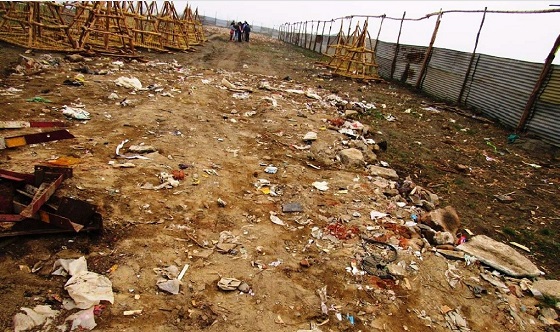
Yamuna AOL debris Courtesy – online media
In future there would be many more projects, which will use this fait accompli principle to desecrate our fragile ecosystems. No matter how many laws we enact, if we are creative enough to leave such loopholes than it is as good as anarchy.
Distopian Future is upon us now in form of Water Wars:
Recently Jats demanding the inclusion of their caste in the list of reserved categories, resorted to destroying the Munak canal which supplies water to Delhi. In many dams we are not even allowed to take photos. However, when this group destroyed a canal crucial to the water security of a State, politicians didn’t call it a terror attack. This action showed the vulnerability of our major cities to water crisis arising out of terror attacks.
It is another matter that instead of breaking the canal, if these hooligans would have dumped toxic materials in the canal, then they would have killed off an entire city. This is perhaps a first major incident in modern times when a group of people have chosen to terrorise people of several states by resorting to a water war. Armies in ancient times in deserts have poisoned the water holes and forced their enemies to die of poisoning and thirst.
This action also shows the contempt with which people treat canals and water bodies. Rivers are considered as just another channel for transporting water. So a Flint River like situation is not at all impossible in India.
According to a recent report in Hindustan Times, in Tikamgarh town in Bundelkhand, armed guards are patrolling a stop dam at Baarighat on the Jaamni river to prevent others from stealing water.
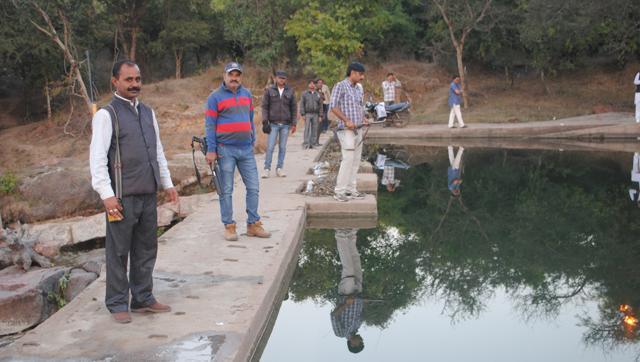
Gunmen hired by Tikamgarh municipality president patrol the Baarighat stop dam which is the main source of potable water in the area. (Courtesy – HT Photo)
In Latur district in Maharashtra, the Government fears riot like situation due to water crisis and has imposed Section 144 of IPC. This section deals in unlawful assembly of people in an area. Latur city is receiving water once a month. The dam supplying water has dried up and people are trying to pump water from bore-wells. So the Government has imposed Section 144 for two months.
India is a country which is well endowed with numerous rivers, streams, fresh water lakes and ponds. Despite this if India is facing a water shortage, then the authorities, planners, opinion makers and other responsible people need to think where we have gone wrong. For a long time wildlife activists, conservationists and ecologists have been sounding warning bells about the need to preserve the riverine ecosystem. Unfortunately, the preservationists are too busy and fragmented in their approach to make any meaningful and long lasting impact on the policies of this country.
Successive Governments at the Centre have all taken anti-environment and anti-wildlife stance. During the previous UPA Government under Mr. Manmohan Singh’s leadership, we had heard of a new term “Green Terrorism” which alluded to environmental and wildlife activists creating roadblocks for large projects. The present NDA Government at the Centre under Mr. Modi’s leadership has gone several notches higher and has started persecuting NGOs and branding anyone raising their voice as anti-national. In such situation people have preferred to keep quiet rather than invite the wrath of the powerful and the mighty.
There are ofcourse people who act according to their narrow interests. However, when opinion makers sincerely believe that in the quest for “development” we need to sacrifice our ecological security, than one ought to be alarmed. Instead of looking for holistic solutions, the approach till now has been to create holes in the ecological security of this country. Rivers have been turned into toxic gutters by releasing untreated domestic sewage and industrial effluents. Sand mining mafia dig up the river bed to take out sand for use in construction despite ban on sand mining. This results in the loss of water percolation and regeneration of the river. Removing the sand also results in the river losing its ability to cleanse itself.
Despite spending thousands of crores of rupees, the River Ganga is still highly polluted with even Supreme Court judges commenting that the Government’s plan of action won’t result in the river being pollution free in our lifetime. The Supreme Court has also noted the collusion between corrupt pollution control board officials and industries in continuing to pollute Ganga. Much of the water of Ganga and other rivers in our country are unfit for drinking according to pollution control board norms. So one cannot rule out the repeat of the situation as witnessed in Flint town in USA where toxic waters supplied to homes ruined many lives forever.
In India the sewage treatment capacity hasn’t kept pace with the requirements of a booming population. We have now close to 1.3 billion people in India. The total volume of municipal waste water generated in India is 61,948 Million litres per day (MLD). However, India only has a capacity to treat 23,277 MLD of waste water. So 62.43% of waste water or a a humongous 38,671 MLD waste water goes untreated every day. This is the reason why all our rivers and lakes have been turned into gutters with hardly any water fit to drink. We are becoming like the mythical Bhasmashura who had a boon to turn any one into ashes by placing a hand on the person’s head. The mythical Bhasmashura was tricked by Lord Vishnu as he said that the boon is not true and Bhasmashura should test it by placing his hand on himself. On doing so Bhasmashura was promptly turned into ashes. Today we are like the mythical Bhasmashura who is destroying himself by poisoning all our rivers. Lord Vishnu had tricked Bhasmashura. We humans pride ourselves as having a superior intellect. I wonder who has tricked us to be on a mission to destroy ourselves by placing our destructive hand on our head.
I live in hope that we can still wake up from our slumber and mend our ways.
IN SEARCH OF STOLICZKA’S BUSHCHAT
(SAXICOLA MACRORHYNCHA STOLICZKA, 1872) IN KACHCHH ARID ECOSYSTEM, GUJARAT
One early morning, on a cool and cloudy day, nearby Siddhpur Town of Mehsana District, we were surveying the forested patches of Patan District, looking for rare and endangered plants and animals of North Gujarat. At around 7.30 am, suddenly peculiar sound was heard, as if someone had thrown small stones on the top of our vehicle, which was loud enough to compel us to stop talking. A glance through the windows revealed the cause, it was hailstorm. We stopped our vehicle, and got into a concrete sheltered bus-stand nearby a village. There were a few villagers reading a local newspaper, and one of us, while brushing through the news, came across a note on reappearance and sighting of a very rare bird species viz. White browed Bushchat (Stoliczka’s Bushchat) in Naliya Grasslands of Kachchh District, Gujarat State. The note was written by the then Range Forest Officer (RFO), Mr. Raghuvirsinh Jadeja. Immediately we changed our plans and decided to look for this rare bird, which was presumed to be extinct in Kachchh mainland, but had reappeared after about 125 years.
For further reading click on the below link –
http://www.indiawilds.com/diary/in-search-of-s…czkas-bushchat/
Conservation News
Agreement on Pollution Abatement
To reduce the pollution in the Mula in Pune, the Government of India has signed a loan agreement with Japan International Cooperation Agency (JICA) in January, 2016. The project ‘Pollution abatement of river Mula-Mutha at Pune under National River Conservation Plan (NRCP)’ will get a soft loan from JICA to the tune of 19,064 million Yen. The interest rate would be 0.3% per annum and will be repaid by the GoI in 40 years. There is a grace period of 10 years for loan repayment.
The Pune Municipal Corporation has no liability to repay the loan.
The project will entail construction of 11 new Sewage Treatment Plants (STPs) of 396 MLD (million litres per day). Also included in this project are works related to laying of sewer lines, renovation/rehabilitation of existing intermediate pumping stations, installation of Central Supervisory Control and Data Acquisition (SCADA) system for centralized monitoring of functioning of STPs, construction of community toilet facilities in slum and fringe areas, public participation and awareness programme etc. The cost of the project will be shared between Government of India and the State Government/Pune Municipal Corporation in the ratio of 85:15 respectively.
Tree plantation drive along Ganga
There is a plant to conduct tree plantation along the Ganges under the first phase of “NamamiGange” project. This tree plantation drive will be conducted in Uttarakhand, Uttar Pradesh, Bihar, Jharkhand and West Bengal along the course of the river Ganges. This scheme aims to develop green areas along the river to help absorb water and help in reducing the soil erosion and will be implemented between 2016 to 2021.
It would be pertinent to mention that most of the dams are dying as siltation is leading to reduction of water retention capacity of these dams. There has been massive deforestation not only in the upper reaches of the Himalayas but also along the river. The construction of dams virtually one every five-six kilometers have changed the nature of Ganga by taming it. The destruction of forests, construction of roads, buildings etc has lead to the Ganga water becoming muddy high up in the hills of Uttarakhand.
The project has identified around 40 species to be planted in various regions based on altitude and their suitability. It is being hoped that these trees will help absorb the rain water, recharge the ground water and help in the percolated water to come out and regenerate the streams and Ganga in various places.
The detailed project report (DPR) will be released by the Water Resources minister Uma Bharti. Apart from the details in the DPR, the success of the scheme would depend upon the implementation. Till now the Govt. is struggling to contain the pollution from industries and the sewage from the townships and cities bordering Ganga. There hasn’t been any lack of good intentions as the first project on cleaning Ganga was launched by the late PM Rajiv Gandhi more than three decades ago in 1986.
Plastic Waste Management Rules, 2016 notified
Minimum Thickness of Plastic Carry Bags Increased from 40 to 50 Microns
The Plastic Waste Management Rules, 2016 has been notified and comes into force. It supercedes the Plastic Waste (Management and Handling) Rules, 2011. The new rules has increased the minimum thickness of plastic carry bags from 40 microns to 50 microns. The new rules are now also applicable in villages. The previous rules was limited till municipal areas.
The Minister of State for Environment, Forest and Climate Change, Shri Prakash Javadekar said that 15,000 tonnes of plastic waste is generated every day, out of which 9,000 tonnes is collected and processed, but 6,000 tonnes of plastic waste is not being collected.
Shri Javadekar also said that the rules, which were admissible upto municipal areas, have now been extended to all villages. The Minister said that notifying the new Plastic Waste Management Rules is a part of the revamping of all Waste Management Rules
The following are the salient features of the new Plastic Waste Management Rules, 2016:
– Increases minimum thickness of plastic carry bags from 40 to 50 microns and stipulate minimum thickness of 50 micron for plastic sheets also to facilitate collection and recycle of plastic waste, likely to increase the cost by about 20 %. Hence, the tendency to provide free carry bags will come down and collection by the waste-pickers also increase to some extent.
– Expanded jurisdiction of applicability from the municipal areas to rural areas;
– bring in the responsibilities of producers and generators, both in plastic waste management system and to introduce collect back system of plastic waste by the producers/brand owners, as per extended producers responsibility;
– Introduce collection of plastic waste management fee through pre-registration of the producers, importers of plastic carry bags/multilayered packaging and vendors selling the same for establishing the waste management system;
– Promote use of plastic waste for road construction as per Indian Road Congress guidelines or energy recovery, or waste to oil etc. for gainful utilization of waste and also address the waste disposal issue; to entrust more responsibility on waste generators, namely payment of user charge as prescribed by local authority, collection and handing over of waste by the institutional generator, event organizers.
Thumbnail-sized new Frog species discovered
Mar 11, 2016
A team of researchers from India and the National University of Singapore (NUS) has discovered a new thumbnail-sized species of a frog near the coastal town of Manipal, Udupi district, in Karnataka. The species is of narrow-mouthed frogs and is found in the laterite rock formations of the coastal plains of Manipal. It was named as “Microhyla laterite” after its natural habitat.

Microhyla Laterite Cortesy – online media
Seshadri KS, PhD student from the department of biological sciences at NUS’s faculty of science said “By naming the frog after its habitat, we hope to draw attention to the endangered rock formations that are of ecological importance. M laterite can potentially be used as a mascot to change peoples’ perception about laterite areas,”. Priti Hebbar, another co-author of the paper published in the journal PLOS ONE added that “One could easily confuse this frog with other species like Microhyla ornata which is thought to occur all over India. However, it was evident from analysing the genes that M. laterite is a distinct species and is closely related to M. sholigari, which is found only in the Western Ghats,”.
The frog, measures around 1.6 cm, and is pale brown with prominent black markings on its dorsum, hands, feet and flanks. It has a call that can be easily mistaken for that of a cricket.
This species “M. laterite” is to be classified as endangered under the guidelines of the Red List by International Union for Conservation of Nature (IUCN).
India has only 37% Sewage Treatment Capacity
The Central Pollution Control Board (CPCB) in association with State Pollution Control Boards (SPCBs) / Pollution Control Committees(PPCs) is said to be monitoring the quality of water bodies at 2500 locations across India under National Water Quality Monitoring Programme (NWQMP). According to Shri Prakash Javadekar, Minister for MoEF&CC the information so far indicates that organic pollution is the predominant cause of water pollution.
In 2008, the Central Pollution Control Board had identified 150 polluted portions of rivers based on higher levels of organic pollution. In 2015, this has increased from 150 polluted river stretches to 302. The rivers stretches are polluted mainly due to discharge of untreated / partially treated sewage and discharge of industrial wastewater.
According to CPCB the total volume of municipal wastewater generation in the country is at 61,948 MLD (Million litres per day) as against the installed sewage treatment capacity of 23,277 MLD leaving a massive gap of more than 38,671 MLD. So India has an installed capacity of sewage treatment plants for only 37.57% of the demand.
According to Shri Prakash Javadekar, the following steps are being taken by the Government to address the issues of water pollution include the following:-
i. Preparation of action plan for sewage treatment and restoration of water quality in aquatic resources by State Governments;
ii. Installation of Online Effluent Monitoring System to check the discharge of effluent directly into the rivers and water bodies;
iii. Setting up of monitoring network for assessment of water quality;
iv. Action to comply with effluent standards is taken by SPCBs / PCCs to improve the water quality of the rivers;
v. Financial assistance for installation of Common Effluent Treatment Plants for cluster of Small Scale Industrial units;
vi. Issuance of directions for implementation of Zero Liquid Discharge;
vii. Issuance of directions under Section 5 of Environment (Protection) Act, 1986 to industries and under Section 18(1)(b) of Water (Prevention and Control of Pollution) Act, 1974;
viii. Implementation of National Lake Conservation Plan (NLCP) and National Wetland Conservation Programme (NWCP) for conservation and management of identified lakes and wetlands in the country which have been merged in February, 2013 into an integrated scheme of National Plan for Conservation of Aquatic Eco-systems (NPCA) to undertake various conservation activities including interception, diversion and treatment of waste water, pollution abatement, lake beautification, biodiversity conservation, education and awareness creation, community participation etc.
Govt. notifies new New Bio-Medical Waste Management Rules
The MoEF&CC has notified the new Bio-Waste Management Rules 2016. The ministry had followed a consultation process by publishing the draft Bio-medical Waste Rules in June, 2015 inviting objections and suggestions from statkeholders and public. Stakeholders consultation meets were organized in New Delhi, Mumbai and Kolkata. Consultative meetings with relevant Central Ministries, State Governments, State Pollution Control Boards and major Hospitals were also held. According to the ministry around 50 suggestions / objections were received and were examined by the Working Group in Ministry. Based on the recommendations of the Working Group, the Ministry has published the Bio- medical Waste Management Rules, 2016.
While releasing the Bio-Waste Management Rules 2016 in New Delhi, Shri Prakash Javadekar, Minister for Environment, Forests and Climate Change said “The new bio-medical waste management rules will change the way country used to manage this waste earlier. Under the new regime, the coverage has increased and also provides for pre-treatment of lab waste, blood samples, etc. It mandates bar code system for proper control. It has simplified categorisation and authorisation.Thus, it will make a big difference to clean India”.
The major salient features of BMW Management Rules, 2016 include the following:-
- The ambit of the rules has been expanded to include vaccination camps, blood donation camps, surgical camps or any other healthcare activity;
- Phase-out the use of chlorinated plastic bags, gloves and blood bags within two years;
- Pre-treatment of the laboratory waste, microbiological waste, blood samples and blood bags through disinfection or sterilisation on-site in the manner as prescribed by WHO or NACO;
- Provide training to all its health care workers and immunise all health workers regularly;
- Establish a Bar-Code System for bags or containers containing bio-medical waste for disposal;
- Report major accidents;
- Existing incinerators to achieve the standards for retention time in secondary chamber and Dioxin and Furans within two years;
- Bio-medical waste has been classified into 4 categories instead of 10 to improve the segregation of waste at source;
- Procedure to get authorisation has been simplified. Automatic authorisation for bedded hospitals. The validity of authorization synchronised with validity of consent orders for Bedded HCFs. One time Authorisation for Non-bedded HCFs;
- The new rules prescribe more stringent standards for incinerator to reduce the emission of pollutants in environment;
- Inclusion of emissions limits for Dioxin and furans;
- State Government to provide land for setting up common bio-medical waste treatment and disposal facility;
- No occupier shall establish on-site treatment and disposal facility, if a service of `common bio-medical waste treatment facility is available at a distance of seventy-five kilometer.
- Operator of a common bio-medical waste treatment and disposal facility to ensure the timely collection of bio-medical waste from the HCFs and assist the HCFs in conduct of training
Bio-medical waste
Biomedical waste comprises human & animal anatomical waste, treatment apparatus like needles, syringes and other materials used in health care facilities in the process of treatment and research. This waste is generated during diagnosis, treatment or immunisation in hospitals, nursing homes, pathological laboratories, blood bank, etc. Total bio-medical waste generation in the country is 484 TPD from 1,68,869 healthcare facilities (HCF), out of which 447 TPD is treated.
Proper Bio-medical waste management
Scientific disposal of Biomedical Waste through segregation, collection and treatment in an environmentally sound manner minimises the adverse impact on health workers and on the environment. The hospitals are required to put in place the mechanisms for effective disposal either directly or through common biomedical waste treatment and disposal facilities. The hospitals servicing 1000 patients or more per month are required to obtain authorisation and segregate biomedical waste in to 10 categories, pack five colour backs for disposal. There are 198 common bio-medical waste treatment facilities (CBMWF) are in operation and 28 are under construction. 21,870 HCFs have their own treatment facilities and 1,31,837 HCFs are using the CBMWFs.
Problems of unscientific Bio-medical waste disposal
The quantum of waste generated in India is estimated to be 1-2 kg per bed per day in a hospital and 600 gm per day per bed in a clinic. 85% of the hospital waste is non-hazardous, 15% is infectious/hazardous. Mixing of hazardous results in to contamination and makes the entire waste hazardous. Hence there is necessity to segregate and treat. Improper disposal increases risk of infection; encourages recycling of prohibited disposables and disposed drugs; and develops resistant micro organisms.
IndiaWilds App for Android Mobile
In India most of the internet penetration is happening through mobile phones. And the existing users who have access to desktops and laptops are becoming much more mobile then they used to be a few years ago. So to raise awareness and reach out to more people we need to adapt ourselves and make IndiaWilds easily accessed through a mobile phone using android OS.
We have created a mobile phone app so that people can access IndiaWilds anytime, anywhere without being tied to a computer. No need to type. One can access at the click of a button.
We have developed this app through Business Compass LLC a company based in Randolph, New Jersey, United States so that we create a good app.
Awareness is the first step before a person can become a champion of wildlife. I hope this will help us in reaching out to more people to raise awareness and make a real impact on the conservation landscape. If you have an android device then please download the app from this link:
https://play.google.com/store/apps/details?id=com.businesscompassllc.indiawilds
Equipment Discussions
Canon launches Canon EOS 1300D

Canon EOS 1300D
Salient Features of Canon EOS 1300D:
- Sensor: APS-C, 18 Mega Pixels
- DIGIC 4+ processor
- ISO: 100-6400 and is expandable upto ISO 12800
- Built in Wi-Fi and NFC connectivity for easy photo sharing to your smartphone for sharing in social media and with the Canon Connection Station C100 device.
- 9 Point AF with the centre point being cross type sensor.
- The EOS 1300D can shoot upto 3 frames per second
- High performance optical view finder.
- LCD: 3 inch LCD with 920,000 dots for better clarity
- Video: Full HD video ie 1080p
- There is a scene intelligent auto mode in this camera which senses whether the camera is tripod mounted or handheld and then selects the settings accordingly.
There is a new Food mode in the EOS 1300D. When the Food mode is selected the camera automatically enhances the colour and brightness of the food and the resulting image comes out pleasing.
There are built-in creative filters like Fish eye, Toy camera, Miniature and Soft Focus to create interesting effects.
The white priority Auto White Balance setting ensures the images have got a neutral tone under incandescent lighting.
Availability: March 2016
Price: The EOS 1300D is priced at $549.99 USD. In India it is expected to retail at Rs. 29995/-. The street price may be lower.
Atomos launches 4K HDR Shogun Flame and Ninja Flame monitor recorders
Atomos has launched 7” 1920×1200 field monitors with 10 stops of the luminance detail of Log with 10-bit HDR Post Production color accuracy, for the first time in a field monitor. The AtomHDR engine not only resolves HDR brightness detail (dynamic range), with 10-bit color accuracy it also resolves 64 times more color information than traditional 8-bit panels.
It utilizes 4K HDMI and 12G-SDI inputs to support clean output signals at resolutions up to UHD 4K (3840 x 2160), recording it to 2.5″ SSDs using 10-bit, 4:2:2 Apple ProRes and Avid DNxHR codecs.

Shogun Flame
These monitor recorders have 1500 nits brightness which will help a lot while shooting outdoors in daylight. In HDR mode, use of an included snap-on sun hood is required, as displaying a wider brightness range reduces the overall brightness of the monitor. The power system is upgraded to ensure less power consumption so one need not frequently rush to change batteries.
The Atomos Shogun and Atomos Ninja also have the professional 4K/HD Apple ProRes/DNxHR Recording, Playback and Editing. According to Atomos the Shogun Flame and Ninja Flame are available for sale starting from March 28th, from the authorized Atomos reseller network.
The monitor features 10-bit FRC processing and AtomHDR display technology support a 10-stop brightness range, allowing more accurate monitoring of log gamma footage without having to view flat, washed-out looking images or use a LUT to compress the dynamic range and color space. The monitor offers built-in pre-sets to accurately translate popular log formats from Sony, Canon, Panasonic, ARRI, RED, and JVC cameras. The settings only affect viewing, with recorded video remained unaltered.
The Flame Series is packed with an extensive suite of scopes, all 1-touch away and simple to use. The Video OS includes tools for focus, framing & exposure (Focus peaking, 2:1/1:1 zoom, Zebra, False Color, Safe Area, luma/RGB parade, vectorscope) along with a flexible 3D LUT implementation (use built-in LUTs or upload .cube files) and options for de-squeezing anamorphic content.
Built to withstand the rigors of production, the Shogun Flame features built-in protective armor that features silicone-covered corners and chamfered edges. Compared to the original Shogun, the Flame now features dual Sony L-Series battery plates that support battery hot-swapping, enabling longer run times.
The audio side is covered as the monitor supports balanced XLR inputs with +48V Phantom Power via an included audio breakout cable. Additional features included Genlock / LTC input, SDI/HDMI cross-conversion, and a variety of onscreen exposure analysis, framing, and focus assist tools. Two NP-F750 batteries are included, along with a fast charger, D-tap power cable, AC power adapter, control cable, USB 3.0 docking station, and five Master Caddy SSD/HDD cases. All items come packaged in a custom HPRC hard case.
The Atomos Shogun Flame has got SDI, Raw and HDMI outputs while the Atomos Ninja Flame has got HDMI output.
The Atomos claim of recording DCI 4K (4096 x 2160)in Raw in the Shogun Flame is a bit deceptive. It says the 4K/HD Raw from select cameras (Sony FS7/FS700 & Canon C300 Mark II/ C500) over SDI can be recorded directly to 10bit 4:2:2: ProRes or DNxHR. So it actually converts the Raw signal to a 10bit ProRes signal and records it. If your client wants ready to edit ProRes files then recording it via Shogun Flame may be fine.
The Shogun Flame is priced at $1695 USD and the Ninja Flame costs $1295 USD.
Preorder Shogun Flame: http://www.bhphotovideo.com/c/buy/Shogun_Flame/Ntt/Shogun%2BFlame/N/0/kw/search/BI/19990/KBID/13252/DFF/d10-v1-t12
Buy Ninja Flame: http://www.bhphotovideo.com/c/buy/Ninja_Flame/Ntt/Ninja%2BFlame/N/0/kw/search/BI/19990/KBID/13252/DFF/d10-v1-t12
Natural History
COUNTRY NOTEBOOK: M. Krishnan: ‘THE MOST STRIKING OF OUR PREDATORS‘ By Saktipada Panigrahi
http://www.indiawilds.com/forums/showthread.php?8852-Country-notebook-m-krishnan&p=79167#post79167
Book Review
Matheran – A Practical Guide By Shailendra Patil, Sunil Patil and Yogesh Chavan
The “Matheran – A Practical Guide” is written like a typical book about a hill station which tourists will appreciate. It traces the history of Matheran, describes various points of Matheran, the places of interest etc. For further reading click the below link –
http://www.indiawilds.com/diary/matheran-a-practical-guide/
Wildlife Photography
Rhino in Manas National park by Samrat Sarkar
http://www.indiawilds.com/forums/showthread.php?17285-Rhino-and-Myna_Manas-National-park
Herd of elephant in Dhikala by Debasis Bose
http://www.indiawilds.com/forums/showthread.php?17308-Herd-of-elephant-in-Dhikalascape
Leopard in Bandipur by Shyamala Kumar
http://www.indiawilds.com/forums/showthread.php?17312-The-sheepish-look-Leopard-in-Bandipur
Skylark by Mangru Minz
http://www.indiawilds.com/forums/showthread.php?17271-Skylark
Small Pratincole by Abhishek Jamalabad
http://www.indiawilds.com/forums/showthread.php?17284-Small-Pratincole
Black Tailed Godwit in Sambar Lake by Paramvir Singh
http://www.indiawilds.com/forums/showthread.php?17282-Black-Tailed-Godwit-in-Sambar-Lake
Malayan Box-Turtle in Manas National Park by Samrat Sarkar
http://www.indiawilds.com/forums/showthread.php?17286-Malayan-Box-Turtle_Manas-National-Park
Crocodile in Sunderbans by Saktipada Panigrahi
Water Monitor Lizard by Abhirup Dutta Gupta
http://www.indiawilds.com/forums/showthread.php?17299-Water-monitor-lizard
Palm Dart by Prajwal Ullal
http://www.indiawilds.com/forums/showthread.php?17293-The-Hind-view
Land Crab by Anil Kumar Verma
http://www.indiawilds.com/forums/showthread.php?17313-Into-Land-Crab-s-Home
I look forward to your inputs and support in preserving the last tracts of wilderness and wildlife left in our beautiful country. For other interesting articles and images check –http://www.indi
To post in the IndiaWilds forums, you can register free of cost using your Full Name as user id at
http://www.indiawilds.com/forums/register.php
If you are already a member of IndiaWilds and have forgotten your user id and/or password you can mail to
administrator@indiawilds.com
If you want to contribute original articles, or for any image enquiries please send a mail to
administrator@indiawilds.com
Regards,
Sabyasachi Patra
Profile | Contact Us | Facebook | Diary | Equipment reviews | Forums | IndiaWilds You Tube Channel
Please post your views and feedback in the comments below.
- Endangered Wild Buffalo of Kaziranga - 4 July,2024
- Leopards: The Last Stand Trailer 2 - 1 July,2024
- GoPro Hero 12 Black - 6 September,2023


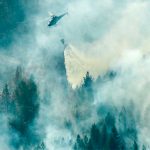

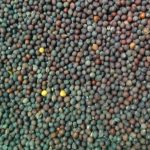





As usual, the issue is a pleasure to read. The tragedy of Flint could only be a trailer what awaits the humans, more so, the humans of the lesser countries.